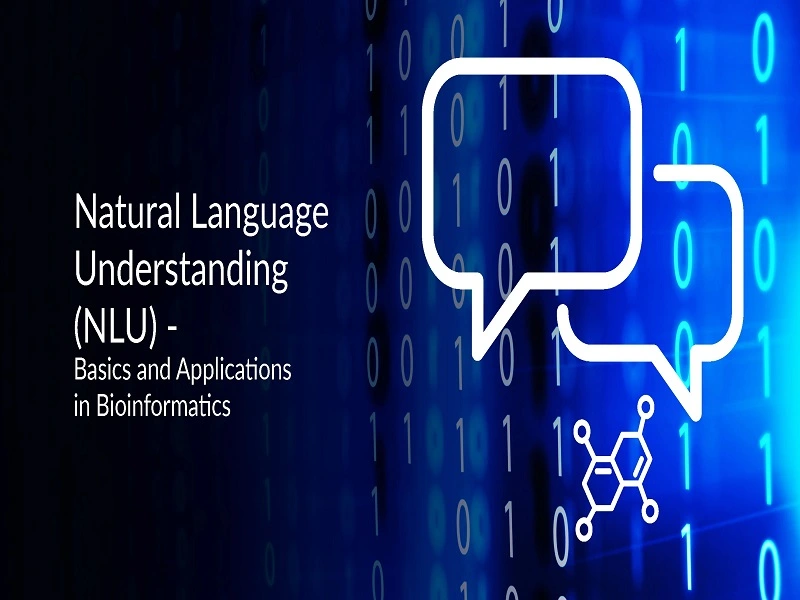Unraveling the Wonders of Natural Language Understanding (NLU)
- Home
- / Unraveling the Wonders of Natural Language Understanding (NLU)
Unraveling the Wonders of Natural Language Understanding (NLU)

Unraveling the Wonders of Natural Language Understanding (NLU)
Introduction
In the vast realm of artificial intelligence (AI), one of the most fascinating and impactful advancements is Natural Language Understanding (NLU). As humans, we effortlessly interpret and comprehend the complexities of language in all its nuances. Now, with the advent of NLU, machines are becoming increasingly proficient at understanding and processing human language, revolutionizing the way we interact with technology and unlocking a myriad of possibilities across various domains. In this comprehensive guide, we'll delve deep into the world of Natural Language Understanding, exploring its definition, underlying principles, applications, challenges, and the transformative impact it's having on our lives.
What is Natural Language Understanding (NLU)?
Natural Language Understanding (NLU) is a branch of artificial intelligence (AI) that focuses on enabling machines to understand and interpret human language in a way that is both accurate and meaningful. Unlike Natural Language Processing (NLP), which primarily deals with the syntactic and structural aspects of language, NLU aims to comprehend the semantics and context behind the words, phrases, and sentences used in human communication. In essence, NLU seeks to bridge the gap between human language and machine understanding, allowing computers to interpret and respond to natural language input in a manner that mimics human comprehension.
At its core, NLU involves a complex set of algorithms, techniques, and models that enable machines to analyze, interpret, and derive meaning from text or speech data. By leveraging machine learning, deep learning, and other AI technologies, NLU systems are able to recognize patterns, infer context, and extract insights from unstructured textual data, enabling a wide range of applications across industries and domains.
Key Components of Natural Language Understanding
To achieve accurate and reliable language understanding, NLU systems typically consist of several key components, each of which plays a crucial role in the overall process. These components include:
-
Text Preprocessing: The first step in NLU involves preprocessing the input text or speech data to clean, normalize, and tokenize it into manageable units such as words, phrases, or sentences. This preprocessing step helps remove noise, punctuation, and irrelevant information, making the data suitable for further analysis.
-
Language Modeling: Language modeling is the process of building statistical or probabilistic models that capture the syntactic and semantic structure of natural language. These models help NLU systems understand the relationships between words, predict the likelihood of certain word sequences, and generate contextually relevant responses.
-
Named Entity Recognition (NER): Named Entity Recognition is a critical component of NLU that focuses on identifying and extracting named entities such as names of people, organizations, locations, dates, and other entities from text data. NER enables NLU systems to recognize and classify important entities within the text, facilitating tasks such as information extraction, entity linking, and sentiment analysis.
-
Semantic Parsing: Semantic parsing involves analyzing the syntax and semantics of natural language sentences to extract their underlying meaning and represent it in a structured format such as logical forms or semantic graphs. Semantic parsers enable NLU systems to understand the intended actions, intents, or queries expressed in user input and generate appropriate responses or actions.
-
Sentiment Analysis: Sentiment analysis, also known as opinion mining, is a subfield of NLU that focuses on determining the sentiment or emotional tone expressed in textual data. By analyzing the polarity, subjectivity, and intensity of words and phrases, sentiment analysis enables NLU systems to classify text as positive, negative, or neutral and extract valuable insights about user opinions, attitudes, and emotions.
-
Contextual Understanding: Contextual understanding is a crucial aspect of NLU that involves considering the broader context in which language is used to interpret its meaning accurately. This includes understanding the context of previous interactions, the user's intent or goals, and the domain-specific knowledge required to comprehend the text effectively.
Applications of Natural Language Understanding
Natural Language Understanding (NLU) has a wide range of applications across industries and domains, transforming the way we interact with technology and enabling new levels of automation, personalization, and intelligence. Some of the key applications of NLU include:
-
Virtual Assistants and Chatbots: NLU powers virtual assistants and chatbots that can understand and respond to user queries, commands, and requests in natural language. From scheduling appointments and answering questions to providing personalized recommendations and troubleshooting issues, virtual assistants and chatbots leverage NLU to deliver intuitive and conversational experiences across various platforms and channels.
-
Voice Recognition and Speech Understanding: NLU enables machines to understand and interpret spoken language, facilitating applications such as voice recognition, speech-to-text transcription, and voice-controlled interfaces. By analyzing the acoustic features, phonetic patterns, and linguistic context of spoken utterances, NLU systems can accurately transcribe speech into text, extract relevant information, and generate appropriate responses.
-
Sentiment Analysis and Opinion Mining: NLU powers sentiment analysis and opinion mining applications that analyze text data from social media, customer reviews, and other sources to extract insights about user sentiment, opinions, and attitudes. By classifying text as positive, negative, or neutral and identifying key themes and topics, sentiment analysis enables organizations to understand customer feedback, monitor brand reputation, and make data-driven decisions.
-
Information Extraction and Text Mining: NLU facilitates information extraction and text mining tasks such as entity recognition, relationship extraction, and event detection from large volumes of unstructured text data. By identifying and extracting relevant entities, facts, and events from text documents, NLU systems enable organizations to extract valuable insights, automate information retrieval, and discover hidden patterns and trends within their data.
-
Natural Language Generation (NLG): NLU powers natural language generation (NLG) systems that automatically generate human-like text based on structured data or pre-defined templates. From generating personalized recommendations and product descriptions to creating news articles and marketing content, NLG enables machines to communicate information effectively and efficiently in natural language, enhancing the user experience and streamlining content creation processes.
Challenges and Limitations of Natural Language Understanding
While Natural Language Understanding (NLU) has made significant strides in recent years, it still faces several challenges and limitations that pose obstacles to achieving full human-level language understanding. Some of the key challenges include:
-
Ambiguity and Polysemy: Natural language is inherently ambiguous, with words and phrases often having multiple meanings depending on the context in which they are used. Resolving ambiguity and disambiguating polysemous words is a complex task that requires sophisticated linguistic analysis and contextual understanding.
-
Contextual Understanding: Understanding the contextual nuances and subtleties of language is a significant challenge for NLU systems, particularly in dynamic and evolving contexts such as conversational interactions or domain-specific domains. Achieving accurate contextual understanding requires capturing and interpreting subtle cues, implicit meanings, and cultural references embedded within the text.
-
Data Sparsity and Domain Adaptation: NLU systems rely heavily on large amounts of annotated training data to learn and generalize patterns in language. However, data sparsity and lack of labeled data in specific domains or languages can hinder the performance of NLU models, especially when applied to new or specialized tasks. Domain adaptation techniques and transfer learning approaches are being explored to address this challenge and improve the robustness of NLU systems.
-
Bias and Fairness: NLU systems are susceptible to biases present in the training data, which can lead to unfair or discriminatory outcomes, particularly in sensitive domains such as hiring, finance, and healthcare. Ensuring fairness, transparency, and accountability in NLU algorithms and models is essential to mitigate bias and promote ethical AI practices.
-
Explainability and Interpretability: Interpreting and explaining the decisions made by NLU systems is crucial for building trust and understanding their behavior. However, many NLU models, particularly deep learning models, are often considered black boxes, making it challenging to interpret their internal workings and decision-making processes. Enhancing the explainability and interpretability of NLU systems is an active area of research aimed at making AI more transparent and accountable.
Despite these challenges, the field of Natural Language Understanding continues to advance rapidly, driven by ongoing research, technological innovations, and real-world applications. As NLU systems become increasingly sophisticated and capable of understanding and interpreting human language with greater accuracy and depth, the possibilities for leveraging AI to enhance communication, collaboration, and creativity are virtually limitless.
Conclusion
In conclusion, Natural Language Understanding (NLU) represents a groundbreaking frontier in artificial intelligence (AI), revolutionizing the way we interact with technology and unlocking new possibilities for communication, automation, and intelligence. By enabling machines to understand and interpret human language in a way that is both accurate and meaningful, NLU is transforming a wide range of industries and domains, from virtual assistants and chatbots to sentiment analysis and information extraction. While NLU still faces challenges and limitations, the ongoing advancements in AI research, coupled with the relentless pursuit of innovation, are driving the field forward and paving the way for a future where machines and humans can communicate seamlessly and intelligently in natural language. As we continue to unravel the wonders of Natural Language Understanding, the journey toward achieving true language comprehension and fluency is poised to redefine the very essence of human-machine interaction and shape the future of AI-powered communication and collaboration.
You May Also Like

Navigating the Housing Market: Understanding Affordability in the UK

"Sleek Strength Meets Cutting-Edge Tech: A Deep Dive into the Galaxy S24 Ultra"


